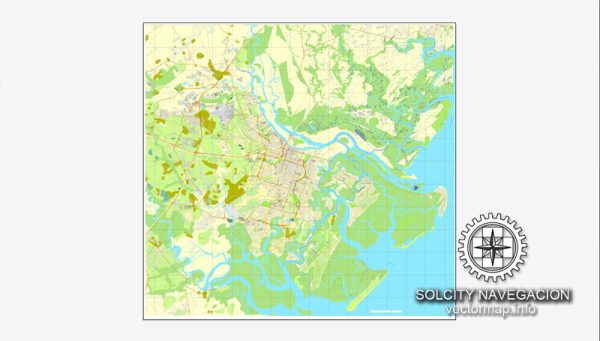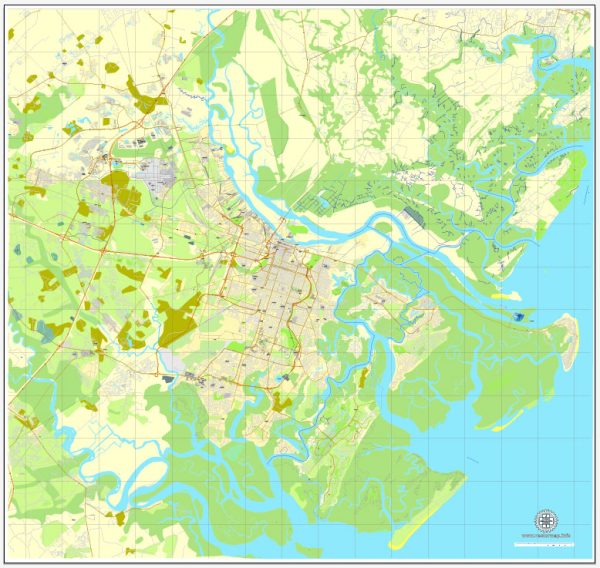Savannah, Georgia, has a rich history of urban development that dates back to its founding in 1733 by General James Oglethorpe. The city was established as the first planned city in the United States, and its layout was designed around a series of squares that served as public spaces and gathering areas. This distinctive urban design has become one of Savannah’s defining features and contributes to its unique charm.
- Oglethorpe’s Plan: General Oglethorpe designed Savannah on a grid system with squares dispersed throughout the city. The original plan included four open squares surrounded by residential and commercial lots. Over time, the city expanded, and more squares were added.
- Colonial and Antebellum Periods: During the colonial and antebellum periods, Savannah thrived as a major port city in the South. The city’s economy was based on agriculture, particularly the cultivation of cotton and rice, which were major commodities at the time. The wealth generated from these industries contributed to the construction of grand homes and buildings, many of which still stand today.
- Civil War and Reconstruction: Savannah played a significant role in the Civil War, and after the war, the city faced the challenges of Reconstruction. Despite the economic hardships that followed, Savannah managed to preserve much of its historic architecture and layout.
- 20th Century Development: In the early 20th century, Savannah experienced both periods of growth and decline. The city adapted to changing economic conditions and saw the expansion of its port facilities. However, like many urban areas, Savannah also faced challenges such as suburbanization and the impact of the automobile.
- Historic Preservation: In the mid-20th century, there was a growing awareness of the need to preserve Savannah’s historic character. The Historic Savannah Foundation, founded in 1955, played a crucial role in advocating for the preservation of the city’s historic buildings and squares. The preservation movement gained momentum, leading to the designation of the Savannah Historic District as a National Historic Landmark in 1966.
- Tourism and Economic Revitalization: In recent decades, Savannah has experienced a significant increase in tourism. The city’s well-preserved historic district, with its cobblestone streets, historic homes, and lush squares, has become a major attraction. Tourism has contributed to the economic revitalization of the city, leading to the restoration of historic buildings and the development of the Riverfront area.
- Contemporary Challenges: Despite its success in historic preservation and tourism, Savannah faces contemporary challenges such as urban sprawl, affordable housing, and infrastructure needs. Balancing the preservation of its historic character with the demands of a growing population and economy is an ongoing concern for city planners and residents.
Savannah’s history of urban development is a testament to its resilience and commitment to preserving its unique heritage while adapting to the changing needs of the community. The city’s well-preserved historic district, vibrant cultural scene, and economic diversification continue to make it a distinctive and beloved destination.



 Author: Kirill Shrayber, Ph.D.
Author: Kirill Shrayber, Ph.D.